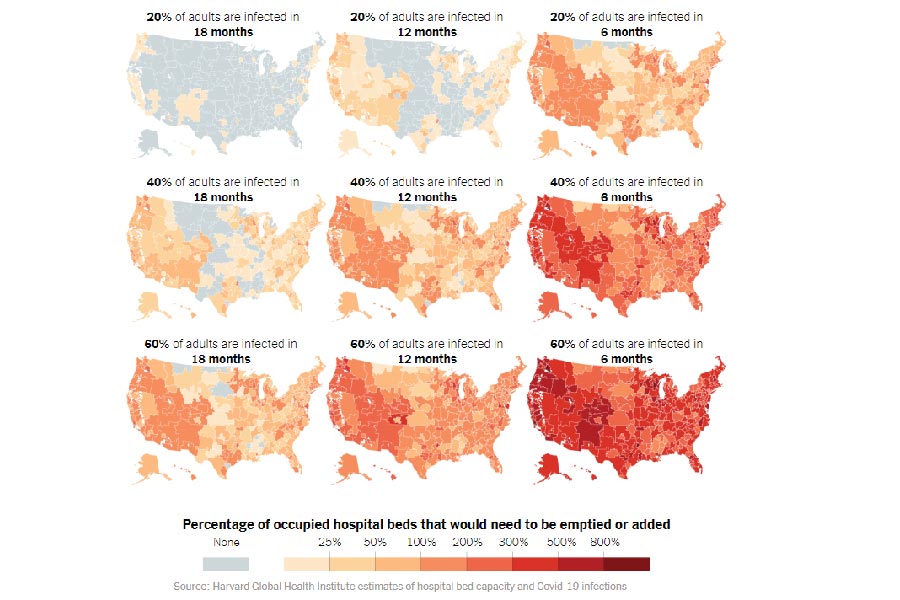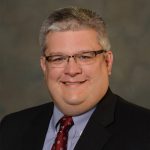Flattening the Curve Part II: The Power of Time and Compounding

Here are answers to some of your latest COVID-19 questions, provided by Brian J. Knabe, MD, CFP®, CMP®, one of our financial advisors in Savant’s Rockford office, who is also a practicing physician.
We in the financial advisory industry oftentimes extoll the virtues of time and compounding when it comes to saving for retirement. In fact, Albert Einstein is rumored to have said that compound interest is the 8th Wonder of the World. It is a simple but immensely powerful concept. Your $100 investment grows at 10% to $110, which is $10 worth of growth. Then the $110 grows at 10% to $121, which is $11 worth of growth. The growth rate becomes faster and faster with each iteration because the base that is multiplying keeps growing larger. This is wonderfully amazing for a 22-year-old at their first job saving in their 401(k). However, the same concept is currently working against us with regard to the spread of COVID-19.
As mentioned in my Part I article, scientists and doctors measure the ability of a disease to spread as its R0. We still do not know what the actual rate is, but let’s continue to assume it is somewhere between 2 and 3, and let’s just split the difference at 2.5. This means it is assumed that every infected individual will infect 2.5 other people. Those 2.5 people then go on to infect 6.25 others, who in turn infect 15.625 people, and so goes the exponential growth via compounding. Now, let’s back into some numbers to see how serious this is.
The United States currently has approximately 738,000 hospital beds, of which 85,000 are ICU beds. If we assume a hospitalization rate of 10%, that means the U.S. health system has the ability to accommodate an infected population of 7.38 million individuals if we dedicate 100% of hospital beds to COVID cases, and only 850,000 infected individuals if limited to ICU beds. As of 3/18/20 the World Health Organization has 3,503 confirmed cases in the United States. Using the current R0 of 2.5 and the current infected population number, we reach the ICU maximum number of 850,000 infected individuals within 6 iterations of individuals spreading the disease. We reach the total hospital bed maximum number of 7.38 million infected individuals within 8.
What we are trying to do with social distancing is lower the R0 multiple (which is kind of like the interest rate) and lengthen the time between iterations (periods of growth). This is the only way to not overwhelm the health system, which is unprepared for this. Looking at the graphic below from the New York Times, with data compiled from the Harvard Global Health Institute, we can see the stark difference in outcomes. The top left corner is where we hope to be: low infection rate over a long time period. The bottom right corner is worst case scenario: high infection rate over a short period. In the best case scenario, we don’t run out of hospital beds. The worst case scenario has regions of the country needing anywhere from 2 to 8 times the number of existing beds.

The point I’m making here is that this is going to get worse before it gets better, so if you haven’t taken action yet, start taking reasonable steps now towards preparing yourself for isolation. Because, similar to saving, you can make the biggest impact in the very early stages. This includes having enough household necessities, groceries, and medication on hand. To do this, take advantage of as many non-contact shopping opportunities as are available, especially if you fall into one of the categories of people who are more susceptible to hospitalization from this virus (individuals over 60, but especially those over 80, and individuals with underlying health conditions like diabetes, heart disease, and lung disease). Many grocery stores have the ability for an individual to order their items online and then pick them up in the parking lot or even have them delivered to your home. Almost every pharmacy has a drive-thru and many also have mail delivery. Delivery times for Amazon have increased but still remain a very viable option for household goods.
I know this seems overwhelming, but I don’t want to sugarcoat the situation we find ourselves in. However, it is not too late for us all to start making a real difference which allows the health system precious time to further prepare itself. As I said last week, worldwide the best doctors and scientists we have are working non-stop on new means of testing and battling this virus. A team of Canadian scientists have announced that they have been able to isolate and grow copies of COVID-19, which is a major step in the direction of creating a vaccine. The Kaiser Permanente Washington Health Research Institute has begun asking for volunteers to participate in a study testing an investigational vaccine for SARS-CoV-2, which is the virus that causes COVID-19. The MetroHealth Medical Center in Cleveland has developed and begun using testing with results being available within 2 hours not several days. All of which are positive signs pointing towards progress made.
I want to end by saying that there is a healthy balance between being informed and obsession. Obsessively reading every COVID-19 post on social media or online article may actually have a detrimental effect on your well-being, as well as furthering the spread of misinformation. To that end, if you do want to read more, here are some of the reputable websites that I use:
- The World Health Organization – COVID-19 Situation Report
- Johns Hopkins Corona Virus Center
- Center for Infectious Disease Research and Policy – Novel Coronavirus Resource Center
Savant plans on continuing to provide you with updates as it relates to both the financial markets and the latest scientific/medical guidance. We remain very grateful for the trust that you have placed in us. Please feel free to reach out to your advisor with any concerns you might have. Together, we will get through this.
Sources: Situation Report – 57, World Health Organization; These Places Could Run Out of Hospital Beds as Coronavirus Spreads, The New York Times; CDC: Older Americans should consider stocking up on food and medications and avoid venturing out as coronavirus spreads, Business Insider; How Scientists Quantify the Intensity of an Outbreak Like COVID-19, University of Michigan Health Lab; The US has one week to enforce social distancing and ‘flatten the curve’ as the coronavirus outbreak escalates. Here’s why these days are so critical, Business Insider; Scientists believe they’ve made a huge breakthrough in coronavirus vaccine effort, New York Post; COVID-19 vaccine trials to begin soon, volunteers being recruited in Seattle, Seattle Post-Intelligencer
For Savant’s latest COVID-19 insights, go here:

